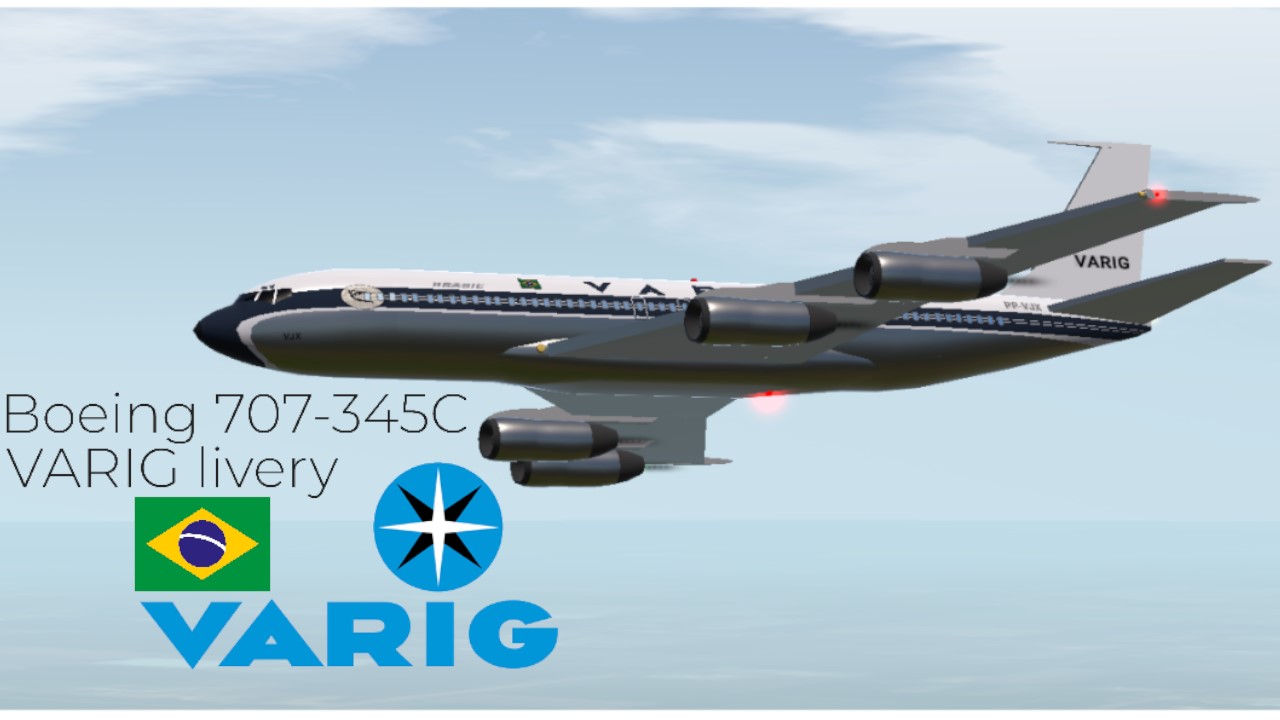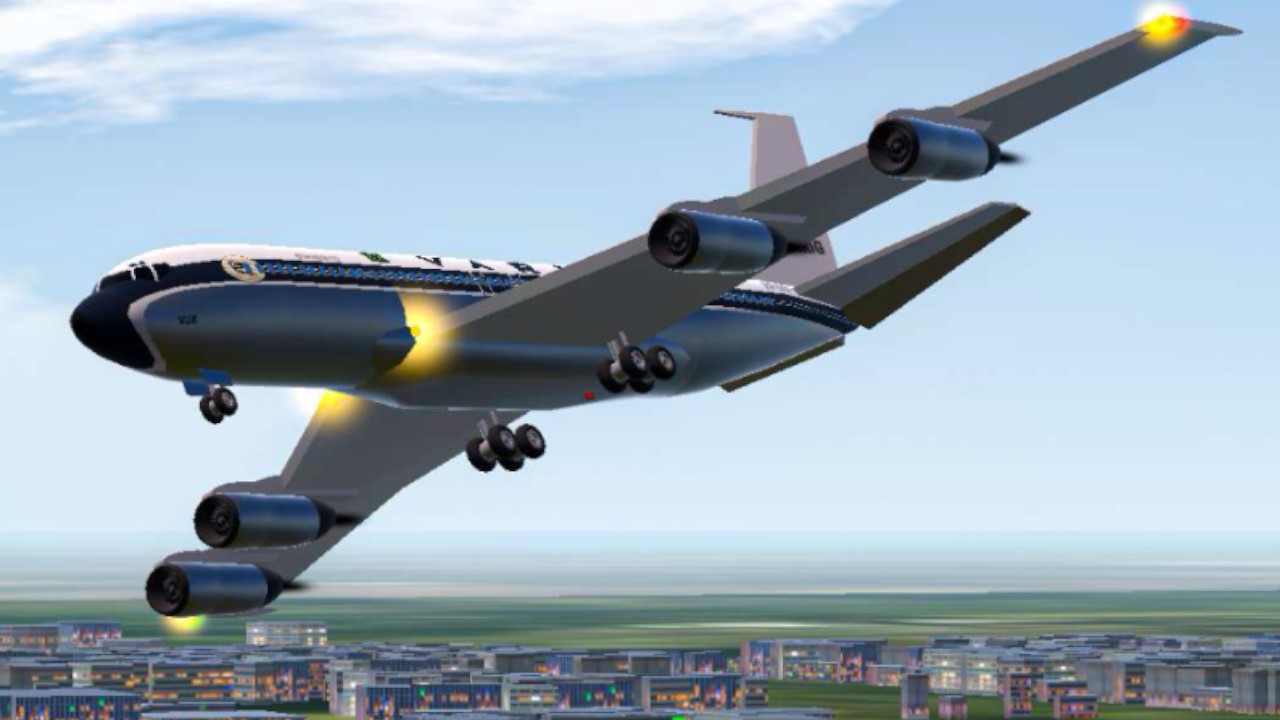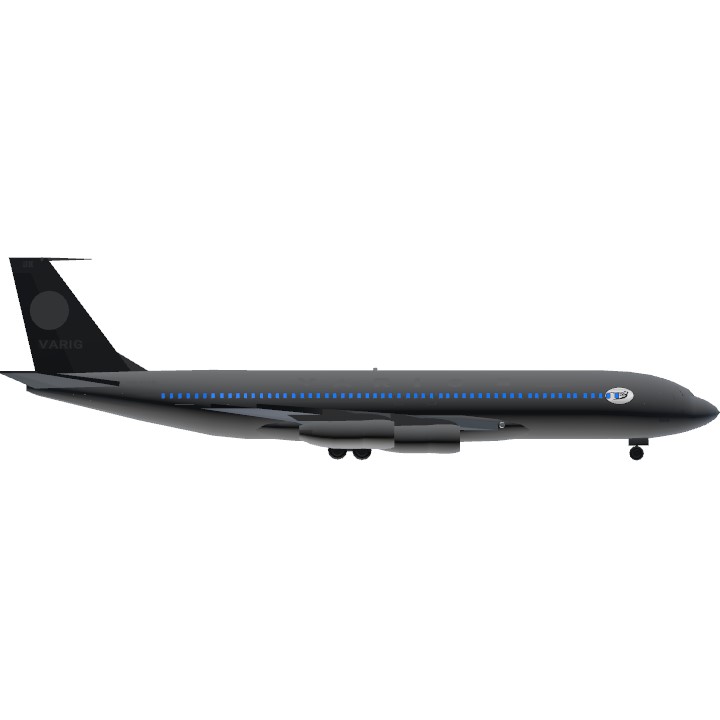Introductions:
Introduction of Boeing 707
The Boeing 707 is an early American long-range narrow-body airliner, the first jetliner developed and produced by Boeing Commercial Airplanes. Developed from the Boeing 367-80 prototype first flown in 1954, the initial 707-120 first flew on December 20, 1957. Pan Am began regular 707 service on October 26, 1958. With versions produced until 1979, the 707 is a swept wing quadjet with podded engines. Its larger fuselage cross-section allowed six-abreast economy seating, retained in the later 720, 727, 737, and 757 models.
Although it was not the first commercial jetliner in service, the 707 was the first to be widespread, and is often credited with beginning the Jet Age.[5] It dominated passenger air-transport in the 1960s, and remained common through the 1970s, on domestic, transcontinental, and transatlantic flights, as well as cargo and military applications. It established Boeing as a dominant airliner manufacturer with its 7x7 series. The initial, 145-foot-long (44 m) 707-120 was powered by Pratt & Whitney JT3C turbojet engines. The shortened, long-range 707-138 and the more powerful 707-220 entered service in 1959. The longer-range, heavier 707-300/400 series has larger wings and is stretched slightly by 8 feet (2.4 m). Powered by Pratt & Whitney JT4A turbojets, the 707-320 entered service in 1959, and the 707-420 with Rolls-Royce Conway turbofans in 1960.
The 720, a lighter short-range variant, was also introduced in 1960. Powered by Pratt & Whitney JT3D turbofans, the 707-120B debuted in 1961 and the 707-320B in 1962. The 707-120B typically flew 137 passengers in two classes over 3,600 nautical miles [nmi] (6,700 km; 4,100 mi), and could accommodate 174 in one class. With 141 passengers in two classes, the 707-320/420 could fly 3,750 nmi (6,940 km; 4,320 mi) and the 707-320B up to 5,000 nmi (9,300 km; 5,800 mi). The 707-320C convertible passenger-freighter model entered service in 1963, and passenger 707s have been converted to freighter configurations. Military derivatives include the E-3 Sentry airborne reconnaissance aircraft and the C-137 Stratoliner VIP transport. In total, 865 Boeing 707s were produced and delivered, not including 154 Boeing 720s.
Introduction of VARIG
VARIG (acronym for Viação Aérea Rio-Grandense, Rio Grandean Airways) was the first airline founded in Brazil, in 1927. From 1965 until 1990, it was Brazil's leading airline and virtually its only international one. In 2005, Varig went into judicial restructuring, and in 2006 it was split into two companies – Flex Linhas Aéreas, informally known as "old" Varig, heir to the original airline – now defunct, and "new" Varig, a new company, fully integrated into Gol Airlines.
Notes:
Credit to MAPA for the original 707
Largely thanks to Apollo018362 for the pics on the thumbnail
É isso!
Specifications
Spotlights
- Rjenteissussy 7 months ago
- Zerkk 7 months ago
- Apollo018362 7 months ago
General Characteristics
- Predecessor Boeing 707-300 Heavy (VIP)
- Successors 2 airplane(s) +74 bonus
- Created On iOS
- Wingspan 148.0ft (45.1m)
- Length 153.1ft (46.7m)
- Height 43.7ft (13.3m)
- Empty Weight 63,166lbs (28,651kg)
- Loaded Weight 105,286lbs (47,757kg)
Performance
- Power/Weight Ratio 1.152
- Wing Loading 22.4lbs/ft2 (109.3kg/m2)
- Wing Area 4,703.3ft2 (437.0m2)
- Drag Points 21496
Parts
- Number of Parts 689
- Control Surfaces 11
- Performance Cost 2,426







@929 原来是这样啊。
那个什么我们的深圳地铁十二号线怎么样了?
暗示即将回归
@LJh1
改名了?
江北机场啥时候发?
This is what I needed!,It's very well done
Wow!
I didn't think at all, just added to My Favorites
Wow, beautiful boi!
你是如何使用蓝图来制作你的飞机
How do you use your blueprint
Seconds baby!